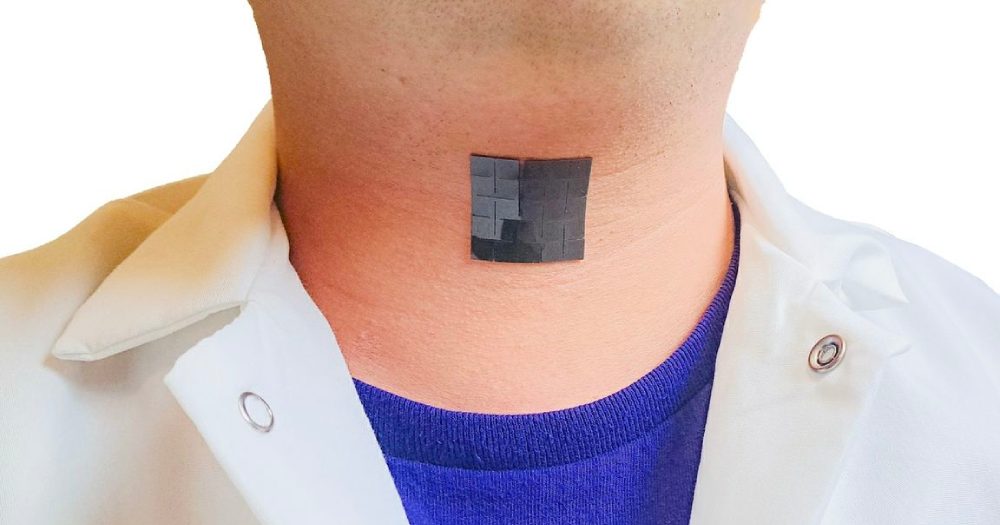New AI-assisted wearable device lets people speak without vocal cords

Imagine having trouble speaking or not being able to talk at all because your vocal cords don't work properly. This is a real struggle for people with certain voice disorders or those recovering from throat cancer surgeries.
There is good news on the horizon thanks to some smart engineers from UCLA, who have come up with a tiny, soft device people can wear on their neck that might help people speak again.
It's a small square patch, a bit bigger than a postage stamp, that sticks to the outside of a throat. From there, it can pick up the movements of throat muscles when patients try to speak and then, with a bit of tech magic, turn those movements into actual spoken words. This small adhesive uses machine learning to translate throat muscle movements into speech with an impressive 95% accuracy.
Jun Chen, a key player in this project, isn't new to creating helpful gadgets. Before this, he and his team made a glove that translates sign language into spoken English in real-time, making life easier for those who use sign language to communicate.
The throat patch is pretty sophisticated. It has a part that senses muscle movements and turns them into electrical signals. Then, these signals get converted into speech sounds. The whole thing is powered by the wearer's movements, so no batteries are required. Also, it is made of skin-friendly materials and even has a bit of a magnetic field to help with the sensing.
This device isn't just easy to wear; it sticks on with a special tape and is lightweight and thin. It could be a game-changer for many people who have a hard time speaking because of their medical conditions. Traditional treatments can take a long time to work, and some options are pretty invasive or just plain uncomfortable.
Jun Chen says this new device is a step towards making communication easier and less invasive for people waiting for or recovering from treatment for voice disorders.
The early tests with healthy adults showed that the device could accurately pick up and translate what they wanted to say into spoken words.
The team's next steps are to expand the device's vocabulary and start testing it with people who actually have speech disorders. This invention has gotten support from some big names in health and science funding, showing just how promising it is.
In a nutshell, this little patch could be a big deal in helping people find their voice again.
💡Did you know?
You can take your DHArab experience to the next level with our Premium Membership.👉 Click here to learn more
🛠️Featured tool
 Easy-Peasy
Easy-Peasy
An all-in-one AI tool offering the ability to build no-code AI Bots, create articles & social media posts, convert text into natural speech in 40+ languages, create and edit images, generate videos, and more.
👉 Click here to learn more


